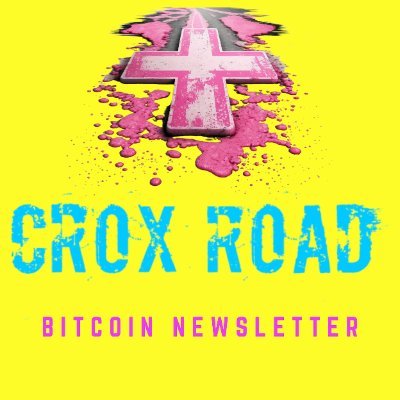-
 @ croxroadnews
2024-12-14 09:42:15
@ croxroadnews
2024-12-14 09:42:15Table Of Content
-
The Birth of Tokenized Bitcoin
-
How Does Tokenized Bitcoin Work?
-
The Advantages of tBTC Over Traditional Bitcoin
-
Expanding the Utility of Bitcoin
-
The Future of Tokenized Bitcoin
-
Conclusion
-
FAQ
In the ever-evolving world of cryptocurrency, Bitcoin remains the gold standard. However, its traditional form has faced challenges, especially when it comes to transaction speeds and adaptability. Enter the tokenized version of Bitcoin on Solana, a solution that promises to address these issues. But what exactly is this new tokenized Bitcoin, and why is it causing such a stir in the crypto community? Let's dive in.
The Birth of Tokenized Bitcoin
Bitcoin, with its unmatched popularity, has always been at the forefront of the cryptocurrency industry. Yet, its primary blockchain has been criticized for being slow in adopting new features, making smaller transactions both time-consuming and expensive. To address these challenges, the Threshold Network introduced the first tokenized version of Bitcoin, known as tBTC, on the Solana blockchain. This innovation aims to bridge the gap between Bitcoin's value and its transactional limitations.
How Does Tokenized Bitcoin Work?
The concept might sound complex, but it's rooted in simplicity. Imagine you have a physical gold bar but find it cumbersome to use in daily transactions. Instead, you get a certificate (or token) representing that gold bar, which you can easily trade or use. Similarly, when someone mints tBTC on Solana, they send their Bitcoin to be "wrapped". This wrapping process involves a decentralized review where the crypto is held in a special wallet. This wallet's authenticity is validated by a majority of people operating nodes on the Threshold Network. Once validated, you receive tBTC equivalent to the Bitcoin you wrapped, which can be used seamlessly on the Solana blockchain.
The Advantages of tBTC Over Traditional Bitcoin
Traditional Bitcoin has its limitations, especially when it comes to smart contracts. Even with advancements like the Lightning Network, these limitations persist. tBTC, on the other hand, offers a more flexible approach. It acts as a proof of ownership, allowing users to prove they possess a certain amount of Bitcoin. Moreover, if they ever wish to revert to their original Bitcoin, they can easily trade their tBTC to claim it back. This process ensures security, as a significant majority of validators must approve the transaction, minimizing the risk of malicious intent.
Expanding the Utility of Bitcoin
One of the most exciting aspects of tBTC is its potential to revolutionize how Bitcoin is used. Traditional Bitcoin holders, if they wished to take a loan against their holdings, had to rely on centralized platforms, which came with their own set of risks. With tBTC, however, they can leverage their Bitcoin on the Solana blockchain, bypassing the limitations of the traditional Bitcoin network. This means they can take out loans, earn yields, and even use their Bitcoin in decentralized exchanges, offering a level of flexibility previously unheard of.
The Future of Tokenized Bitcoin
Tokenized Bitcoin, especially tBTC on Solana, is a groundbreaking advancement, but it's just the beginning of a broader trend. Other major blockchains, such as Ethereum, Arbitrum, Optimism, and Polygon, have also integrated this concept, showcasing the growing appeal and versatility of tokenized Bitcoin. This widespread adoption underscores the crypto community's belief in its potential, making Bitcoin more adaptable and enhancing its interoperability across different platforms.
Moreover, the rising trust in tokenized Bitcoin suggests a promising trajectory for the decentralized finance (DeFi) sector. As tokenized assets become more mainstream, platforms like Solana stand to benefit immensely, heralding a new era for the entire DeFi ecosystem. The embrace of tokenized Bitcoin is not just a win for Bitcoin itself but a testament to the evolving dynamics of the crypto world.
Conclusion
The introduction of tBTC on Solana is more than just a technological advancement; it's a testament to the crypto community's relentless pursuit of innovation. As we continue to witness the blending of traditional and modern financial systems, tokenized assets like tBTC will undoubtedly play a pivotal role in shaping the future of decentralized finance.
FAQs
What is tokenized Bitcoin? Tokenized Bitcoin, like tBTC on Solana, is a representation of Bitcoin on other blockchains, allowing for more flexibility and interoperability.
Why was tBTC introduced on Solana? tBTC was introduced to address Bitcoin's transactional limitations, making it more adaptable and efficient on platforms like Solana.
How does tokenized Bitcoin differ from traditional Bitcoin? While traditional Bitcoin has limitations with smart contracts and transaction speeds, tokenized Bitcoin offers more flexibility, especially on platforms like Solana.
Are other blockchains adopting tokenized Bitcoin? Yes, apart from Solana, blockchains like Ethereum, Arbitrum, Optimism, and Polygon have also integrated tokenized Bitcoin.
What does the rise of tokenized Bitcoin mean for the DeFi sector? The growing trust in tokenized Bitcoin suggests a promising future for the DeFi sector, with platforms like Solana leading the way in innovation and adoption.
That's all for today
If you want more, be sure to follow us on:
NOSTR: croxroad@getalby.com
X: @croxroadnews
Instagram: @croxroadnews.co
Youtube: @croxroadnews
Store: https://croxroad.store
Subscribe to CROX ROAD Bitcoin Only Daily Newsletter
https://www.croxroad.co/subscribe
*DISCLAIMER: None of this is financial advice. This newsletter is strictly educational and is not investment advice or a solicitation to buy or sell any assets or to make any financial decisions. Please be careful and do your own research. *
-